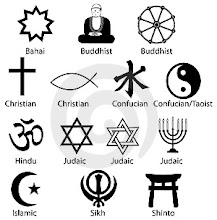Mărțișor, is an old Romanian celebration at the beginning of spring, on March the 1st. Symbolically, it is correlated to women and to fertility as a means of life and continuity. The tradition is authentic in Romania, Moldova, and all territories inhabited by Romanians and Aromanians. Alike though not identical customs can be found in Bulgaria (see Martenitsa), while similar ones exist in Albania, Greece and Italy.
Some ethnologists consider Mărţişor to have a Roman origin, while others believe it to have a Daco-Thracian origin. In ancient Rome, New Year's Eve was celebrated on March 1 - 'Martius', as the month was called in the honour of the god Mars. Mars was not only the god of war but also an agricultural guardian, who ensured nature's rebirth. Therefore, the red and white colours of Mărţişor may be explained as colours of war and peace. The Thracians also used to celebrate the New Year's Eve on the first day of March, a month which took the name of the god Marsyas Silen, the inventor of the pipe (fluier, traditional musical instrument), whose cult was related to the land and vegetation. Thracian spring celebrations, connected to fertility and the rebirth of nature, were consecrated to him. In some areas, Daco-Romanians still celebrate the agrarian New Year in spring, where the first days of March are considered days of a new beginning. Before March 1, women choose one day from the first nine of the month, and judging by the weather on the chosen day, they would know how the new year will go for them. Similarly, in other areas, young men find out what their wives are going to be like. The first 9 days of March are called Baba Dochia's Days, Baba Dochia being an image of the Great Earth Goddess. The tradition says that you must pick a day from 1 to 9 March, and how the weather in that day will be, so it will be for you all year long. Source wikipedia... click on link if you want to read more.
Some ethnologists consider Mărţişor to have a Roman origin, while others believe it to have a Daco-Thracian origin. In ancient Rome, New Year's Eve was celebrated on March 1 - 'Martius', as the month was called in the honour of the god Mars. Mars was not only the god of war but also an agricultural guardian, who ensured nature's rebirth. Therefore, the red and white colours of Mărţişor may be explained as colours of war and peace. The Thracians also used to celebrate the New Year's Eve on the first day of March, a month which took the name of the god Marsyas Silen, the inventor of the pipe (fluier, traditional musical instrument), whose cult was related to the land and vegetation. Thracian spring celebrations, connected to fertility and the rebirth of nature, were consecrated to him. In some areas, Daco-Romanians still celebrate the agrarian New Year in spring, where the first days of March are considered days of a new beginning. Before March 1, women choose one day from the first nine of the month, and judging by the weather on the chosen day, they would know how the new year will go for them. Similarly, in other areas, young men find out what their wives are going to be like. The first 9 days of March are called Baba Dochia's Days, Baba Dochia being an image of the Great Earth Goddess. The tradition says that you must pick a day from 1 to 9 March, and how the weather in that day will be, so it will be for you all year long. Source wikipedia... click on link if you want to read more.
Now about me giving one to someone I haven't, never I don't really believe in that so yeah, I planed on giving one to my ex girlfriend with whom I still talk to and I'm still in love with, but she wont even meet me to give her the portrait that I've made, and I feel really bad about that, so there's no way I can give her a mărţişor...












